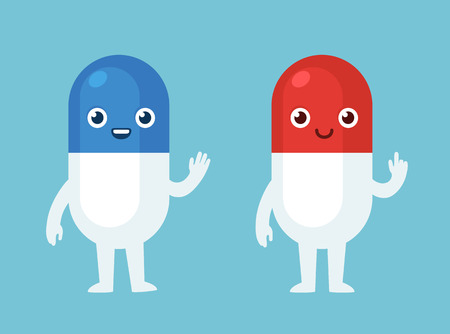An ongoing dialogue on HIV/AIDS, infectious diseases,
September 9th, 2018
Doravirine Sets a New Standard for NNRTIs — But What Role in HIV Treatment Today?
The HIV drug class called “non-nucleoside reverse transcriptase inhibitors,” or NNRTIs, must have something of an inferiority complex.
First, anything defined by what it is not is already in trouble. Believe me, hepatitis C was thrilled when it could shed the “non-A, non-B hepatitis” label.
Second, despite their high antiviral potency and good tolerability, the NNRTIs have always been an afterthought to the protease inhibitors (PIs) when discussing how combination therapy transformed the effectiveness of HIV therapy back in the 1990s. Take a look at this classic paper — over 5000 citations and counting — especially its famous figure.
However, from a global perspective, it has been NNRTI (not PI)-based regimens in that have had the greatest impact in years of life saved from antiretroviral therapy.
Let’s add to the NNRTI list of accomplishments by citing that no study of initial therapy has ever demonstrated superiority over efavirenz from a purely virologic perspective (not even dolutegravir); that a meta-analysis did not show a difference in clinical outcomes between PI and NNRTI-based therapies; and that efavirenz-based regimens appear (ironically) to be quite safe for the fetus during conception and pregnancy.
So — now that I’ve defended the drug class, let’s introduce the latest member, doravirine, which was approved by the FDA during their busy last week of August.
Approval of both doravirine individually and the coformulated doravirine/lamivudine/tenofovir DF tablet was based on the results of two clinical trials.
Given with TDF/FTC or ABC/3TC, doravirine was non-inferior to darunavir + ritonavir with a better lipid profile at 48 weeks, and superior at 96 weeks due to fewer adverse events. Similarly, the once-daily single tablet was compared to TDF/FTC/EFV in a double-blind trial, and also found to be non-inferior.
Dosed 100 mg once-daily, doravirine has several advantages over existing drugs in the NNRTI class:
- Few drug interactions, in particular none with acid-reducing agents.
- Can be taken with or without food.
- A more favorable lipid profile, lower incidence of rash, and fewer CNS side effects than efavirenz.
- A novel resistance pathway, with activity against viruses with K103N or Y181C mutations. By contrast, the V106I and F227C mutations selected by doravirine do not cause in vitro resistance to either rilpivirine or etravirine — and may induce hypersusceptibility to certain NRTIs.
These advantages notwithstanding, the role of doravirine or the coformulated tablet in HIV treatment today is uncertain. Major HIV treatment guidelines now list integrase inhibitor based regimens as preferred for initial therapy, and the drug has not been compared to an integrase inhibitor in any clinical trial. Furthermore, the single tablet option contains tenofovir disoproxil fumarate, which has more renal and bone toxicity than tenofovir alafenamide.
Still, since this appears to be a “best in class” drug, doravirine has enough advantages that it is a useful advance in HIV therapy, if not a transformational one. Think of the following patients, for example:
- Those who can’t tolerate integrase inhibitors.
- Someone looking for efavirenz or rilpivirine alternatives within the same drug class, due to concerns over CNS side effects or use of acid-reducing agents, respectively.
- Off-label use as part of a switch strategy for patients with susceptible virus. (A switch study is ongoing.)
- As a cost-saving strategy, depending on listed and negotiated prices — in particular for the single tablet, since the non-doravirine components are generic.
Of note, doravirine is also under study with the potent and long-acting agent MK-8591 as part of a two-drug strategy. MK-8591 is an NRTTI, the second T standing for “translocation”.
Two final points: The drug is abbreviated “DOR” — not “DRV,” which was already taken by darunavir.
And the brand names are Pifeltro, for doravirine alone, and Delstrigo, for the coformulated single tablet — note that “STR” in there? One can assume that stands for “single tablet regimen.”
Still, together they sound like the name of a famous Sicilian puppet duo, best known for their slapstick comedy routines.



Why are new drugs not trialled against integrase inhibitors? Do you think it’s fear that it would not be non-inferior or is there a valid reason why it wasn’t done?
The Palellalegram!
Yep. I might have spelled it “Palellagram”, but you’re version has the right number of syllables.
Paul
Great clinical overview. DORA seems also to have the potential to be a long acting drug suitable for nanoformulation.
My first reaction was “why bother?” Then again why not have another option for certain scenarios. It is another STR option regardless of transmitted NNRTI mutations detected AND not a problem if one is dependent on PPI use for GERD.
Thanks For Sharing
So would you prefer to use Pifeltro + Descovy versus Delstrigo? What’s your take on the meta-analysis saying that TAF had no advantage over TDF in patients on unboosted regimens?